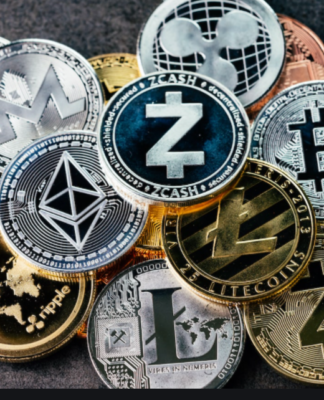Despite being surrounded by electronic devices, electronics still has a certain air of mystery. Since nothing can be seen functioning to make gadgets function, the workings of electronic projects look so abstract.
However, in practice, projects can be built with little knowledge of the underlying theory. Although having a working grasp of electrical theory is highly beneficial, creating straightforward yet practical projects does not require it. Understanding the parts that are used on a circuit board and how they work is an excellent place to start.
The parts on a PCB work together to create a comprehensive system to power our electronics, much as how cities function which you will better understand through PCB Course. The thought of having so many different components on a PCB won’t seem so strange if you start thinking along these lines. We’ll introduce 10 commonly used electronic components installed on printed circuit boards to get you started.
1.Resistors
One of the most popular and likely easiest to comprehend components on PCBs are resistors. Their purpose is to block the flow of electricity by converting electrical energy into heat. They exist in a wide variety of designs and are built of a variety of materials, but the ‘axial’ form resistors with leads on both long ends and a body decorated with coloured rings are the traditional resistors that hobbyists are most familiar with. These rings serve as a code to represent their resistance level.
2.Capacitors
Capacitors have the ability to temporarily store electric charge before releasing it if more power is required in another part of the circuit. Usually, it accomplishes this by accumulating opposing charges on two conductive layers separated by a dielectric substance. While some resemble axial resistors in appearance, the traditional capacitor is radial in design with the two leads sticking out from the same end.
3.Inductors
Inductors are similar to capacitors in that they also serve as energy storage devices, but as opposed to capacitors, they do so by storing energy in the form of a magnetic field that is created as current passes through them. Wire coils are the most basic type of inductor. The magnetic field and hence inductance increase with the number of windings. They might be encircled by a magnetic core with a variety of forms. As a result, the magnetic field and the energy that has been stored are amplified significantly.
4.Potentiometers
Variable resistors come in the form of potentiometers. They are frequently seen in rotary and linear varieties. A rotary potentiometer’s knob is turned to change the resistance when the slider contact is moved over a semi-circular resistor. The volume control on radios, where the rotating potentiometer regulates the amount of current to the amplifier, is a famous example of a rotary potentiometer. The only difference between the linear potentiometer and a resistor slider contact slider is how resistance is changed. They are excellent when field fine-tuning is necessary.
5.Transformers
Transformers are devices that move electrical energy from one circuit to another while varying the voltage. You may say that the voltage is “transforming.” They have a soft iron core with at least two wire coils coiled around it, much like inductors. The primary coil is for the initial circuit, or source circuit, and the secondary coil is for the circuit receiving the energy transfer. You may have noticed massive industrial transformers on telegraph poles; they step-down overhead transmission cables’ generally several hundred thousand volt voltage to the few hundred volts typically needed for domestic use.
6.Diodes
A diode is a device that only permits current to travel in one direction, from the anode (+) to the cathode, much like a one-way street (-). In order to accomplish this, it has zero resistance in one direction and high resistance in the other. This feature can be used to prevent damaging current from flowing in the wrong direction.
7.Transistors
The essential building elements of contemporary electronics are thought to be transistors. A single IC chip may contain several billion. However, transistors are merely electronic switches and amplifiers. They come in a variety of varieties, with the bipolar transistor being the most popular. They can also be divided into NPN and PNP variations. Base, Collector, and Emitter are the three pins on a bipolar transistor.
8.Silicon-Controlled Rectifier (SCR)
The Silicon Controlled Rectifiers (SCR), also known as thyristors, are comparable to transistors and diodes; in fact, they are simply two transistors cooperating. They have three leads as well, but instead of three silicon layers, they have four, and they solely serve as switches, not amplifiers. Another significant distinction is that a single pulse is all that is needed to activate the switch as opposed to a single transistor, which requires continuous application of current. They are better equipped for switching greater power.
9.Integrated Circuits
Integrated circuits, or ICs, are exactly that—circuits and components that have been compressed into semiconductor wafers. The first calculators and the current generation of powerful computers, from smartphones to supercomputers, were made possible by the sheer amount of components that could be fitted onto a single chip.
10.Sensors
The purpose of sensors is to detect changes in the environment and produce an electrical signal that corresponds to those changes and transmits it to other electronic components in the circuit. In essence, sensors are transducers because they transfer the energy from a physical phenomena into electrical energy (convert energy in one form into another). They can range from a particular resistor type used in a resistance temperature detector (RTD) to LEDs that pick up infrared signals, like those seen in television remote controls. There are many different types of sensors for different environmental stimuli, including motion, wetness, touch, sound, and humidity sensors.
Conclusion
PCB are very essential and crucial for electronic devices. There are many components that make up the PCB, and these commonly used components are what makes PCB so resourceful.
Do let me know your suggestions through comments. Happy Learning!


























